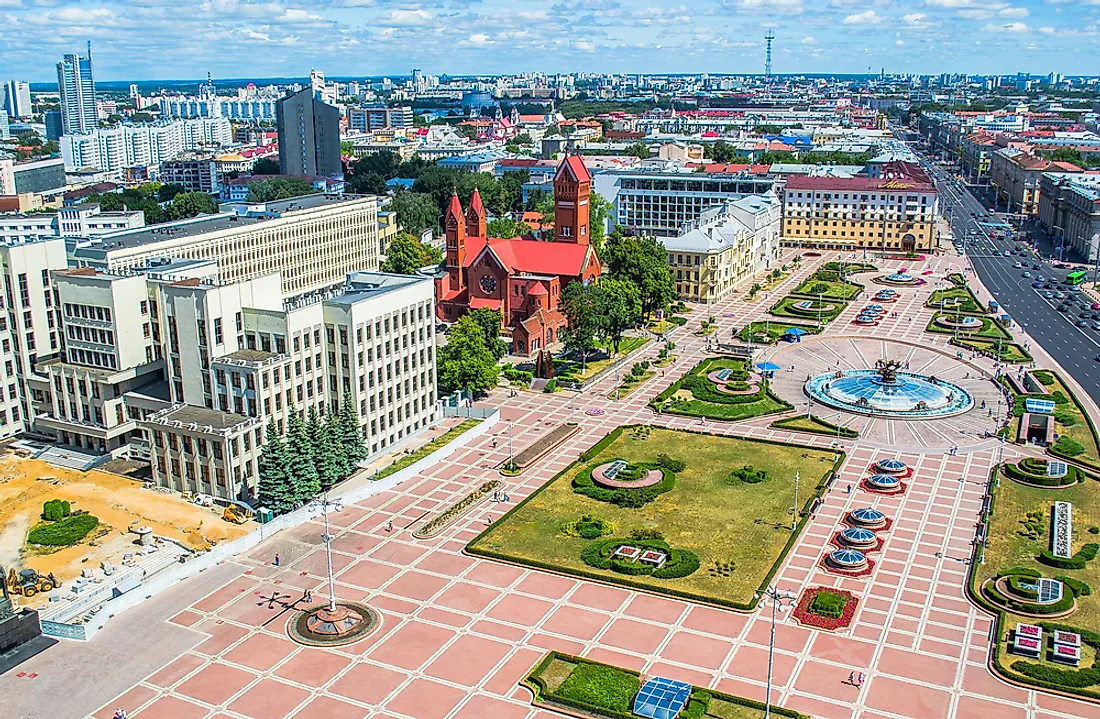What Type Of Government Does Belarus Have?

Belarus declared its independence from the Soviet Union in July of 1990. By 1994, the country had adopted its Constitution, which established a presidential republic and bicameral parliamentary government system. A presidential system of government means that the President serves as both the Head of State and Head of Government while leading the executive branch. The government of Belarus is divided into 3 branches: executive, legislative, and judicial. This article takes a closer look at each one.
Executive Branch Of The Government Of Belarus
The executive branch of government is headed by the President of Belarus. The person in this position is elected by the general population to serve a 5-year term. The 1994 Constitution originally defined a limit of two terms for the President. Current President Lukashenko was elected in 1994 and again in 1999. At the end of his second term, the population voted in favor of the Belarusian Referendum of 2004, which allowed him to run for a third time. To date, Lukashenko has been the only person to serve as President in post-Soviet Belarus.
The President is responsible for appointing the Prime Minister, who heads the legislative branch, and the Council of Ministers, who head each government Ministry. Additionally, the President assigns the Chairperson of the Supreme Court, signs bills into law, gives an annual speech to Parliament, and acts as the Commander-in-Chief of the armed services. On an international level, the President of Belarus may negotiate intergovernmental affairs and sign treaties.
Legislative Branch Of The Government Of Belarus
The legislative branch of government consists of the Prime Minister, who is appointed by the President, and the National Assembly. The National Assembly is the parliamentary body of government and is divided into 2 areas: the Council of the Republic and the House of Representatives.
The Council of the Republic serves as the upper house of Parliament and consists of 64 members. Membership is based on political geography of the country with 8 members representing each of the 6 oblasts, 8 members representing the capital Minsk, and 8 members appointed by the President.
The House of Representatives serves as the lower house of Parliament and consists of 110 members. Members are elected by the general public. Current political representation is as follows: Independent (93 seats), Communist Party (8 seats), Belarusian Patriotic Party (3 seats), Republican Party of Labor and Justice (3 seats), Opposition (2 seats), and the Liberal Democratic Party (1 seat).
Judicial Branch Of The Government Of Belarus
The judicial branch of government was previously made up of 3 primary courts: the Economic Court, the Supreme Court, and the Constitutional Court.
The Economic Court oversees cases involving monetary, economic, or business-related disputes between members of the public or local level governments and the national government. In January of 2014, the Economic Court was consolidated with the Supreme Court of Belarus.
The Supreme Court is considered to be the final court of appeals of Belarus. It oversees the lower courts in the country and decides on cases of criminal and civil law. Its judges are appointed by the President.
The Constitutional Court of Belarus has the express purpose of deciding and interpreting law that deals with issues concerning the Constitution. It has 12 judges that serve for an 11-year term and ensure that no local law is enacted against the intentions of the Constitution. The President appoints 6 of the judges and the Council of the Republic appoints the other 6.











